Tags
Bayeux, Cemeteries, Commonwealth War Graves Commission, Gertrude Jekyll, History, Landing Beaches, Museums, Saving Private Ryan, The Longest Day, Travel, Victoria Cross, Winston Churchill, World War 2
A guest contributor takes us on a tour of Normandy’s World War 2 battlefields
The world-changing liberation of Europe began on 6th June 1944 on the beaches, in the fields, through the streets and in the bocage of western Normandy. The region is replete with museums and memorials which tell the awesome and uplifting story of the Allied Invasion and the individual deeds of countless brave and clever men and women.
The historic D-Day battlefields are well worth a visit, and start about an hour’s drive west of Les Iris. A D-Day visit does need to be planned, as there is more than enough to see and do in one day. But visitors who wish to devote more time to it will be well rewarded.
The closest beaches to Les Iris are Sword (British), Juno (Canadian) and Gold (British). These are flanked on the east by the River Orne and its Canal. Omaha and Utah (both American) are further to the west.

A good place to start is the famous Pegasus Bridge at Benouville, over the Caen Canal, the first bit of France to be liberated just after midnight on 6th June, by British glider-borne troops, in a brilliantly planned and executed swoop. This strategic crossing was taken and held by lightly armed airborne troops, including paratroopers of the 6th Airborne Division dropped in the small hours, until relieved by Brigadier the Lord Lovat, whom Churchill described as “the handsomest gentleman ever to slit a throat”. His commandos, fighting hard across-country all the way from Sword beach, four miles away, arrived shortly after midday, just two minutes behind schedule. Nevertheless, the immaculately mannered, Highland aristocrat modestly apologised for being ‘late’.
 .
.
From here it is a short drive north to Ouistreham on the coast, then west past Sword and Juno to the western end of Gold beach at Arromanches, with its museums, restaurants and cafes and what remains of the ingenious, artificial Mulberry Harbour, which the British brought with them.
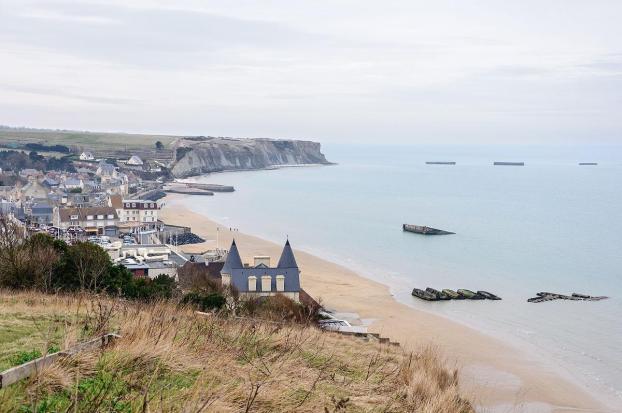
At Omaha Beach (American) west of Arromanches, where the GIs took heavy casualties, the informative and moving American Cemetery and Memorial overlooking the beach is a must-see. Look out for the photographs of the four Niland brothers, on whom the movie, Saving Private Ryan, is based. Fritz (the real-life Ryan) was shipped back to America so that the Niland family wouldn’t lose all their sons. Mirabile dictu, Edward, who was originally thought dead, escaped Japanese captivity, so that in fact two of the four brothers survived the war.
But the big choker is the sight of 9,000 headstones, mostly marble crosses, interspersed with stars of David, all arranged in perfect symmetry, marking the graves of American soldiers who made the ultimate sacrifice for freedom, right across Normandy, and were laid to rest here in the majestic Omaha Beach Cemetery.
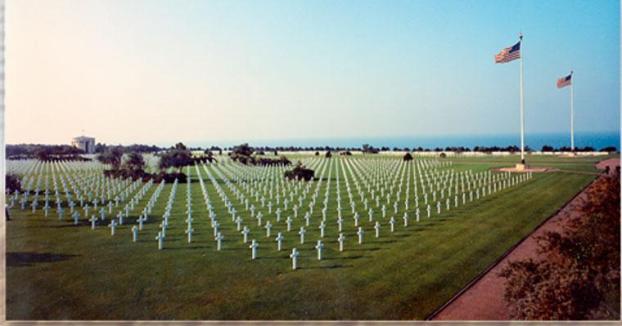
If your spirits need a lift after this sobering experience, visit the nearby Pointe du Hoc, to the west of Omaha, where US Rangers scaled 100 foot cliffs on London Fire Brigade ladders to capture the enemy gun emplacements on top, which they did in a dazzlingly well-planned, courageous and successful manoeuvre.
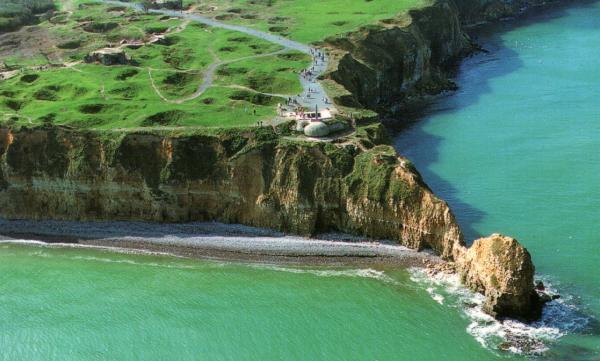
Utah Beach (American) on the Cotentin or Cherbourg Peninsula is the most westerly of the five beaches and the one on which the German resistance was lightest. If you have time, visit the invasion museum at Sainte-Mère-Eglise, which is arguably the best in Normandy.
Those who are old enough to have seen the film The Longest Day will remember that one American’s parachute snagged on the church tower – and he’s still there, it would appear!
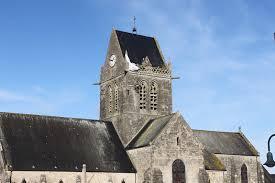
On the return journey, take the time to visit Bayeux, if you can. This ancient town was one of the first the British, coming south from Gold beach, took from the retreating Germans. Being spared serious fighting, Bayeux retains its medieval charm, not to mention the Bayeux Tapestry, which tells the (somewhat spun) story of the last successful Invasion of England in 1066 by William the Conqueror.
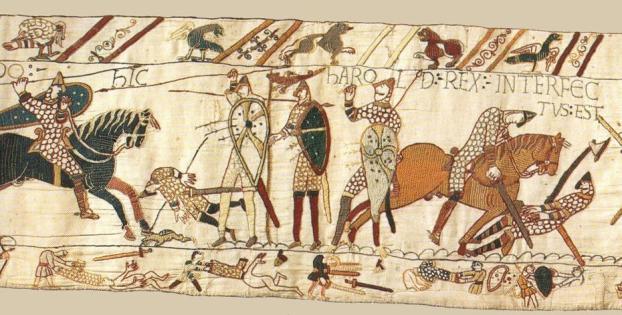
Bayeux also has a good ’44 museum and across the road, you will find the main British cemetery in Normandy, wonderfully well-maintained by the Commonwealth War Graves Commission. It contains the remains of over 4,000 Commonwealth sailors, soldiers and airmen, over 300 of them unidentified, as well as over 500 war graves of other nationalities, the majority German.

Like all such cemeteries, it is laid out in an under-stated, dignified and uniform style, first adopted in WWI. One of the original designers, Gertrude Jekyll, wished to create the ambience of an English garden and suggested that small rose bushes should be planted among the graves so that “The shadow of an English rose shall fall at some point each day on every headstone.”
In the cemetery register, look up the citation to Sidney Bates, the 23-year old son of a Rag-‘n-Bone man from Camberwell in south London. The Corporal’s quick thinking in thwarting a determined enemy attack and courage in fighting despite multiple wounds until his battalion’s position was no longer threatened, earned him a posthumous Victoria Cross, Britain’s highest award. The Victoria Cross insignia is carved on his headstone with the words, ‘For Valour’.
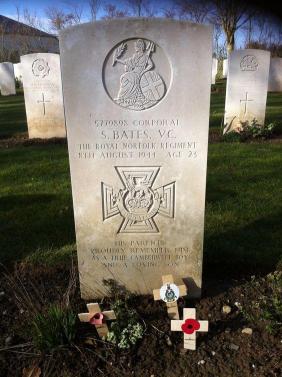
Visiting all these sites would require at least two days – and this only covers the first phase of the Normandy campaign: the ‘break-in’ to establish and consolidate a beach-head. The ‘break-out’ took two more months of heavy fighting and even heavier casualties. The British & Canadians, driving south, were time and again checked by the Germans in desperately hard battles around and beyond Caen, before General Montgomery eventually took it and broke out south towards Falaise.
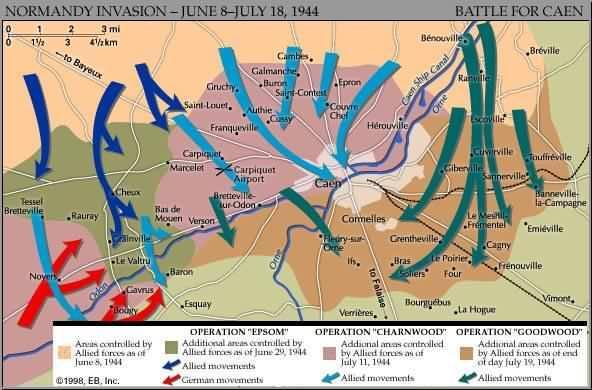
Meanwhile, the Americans took St. Lo in the west and General Patton unleashed his tanks in a fast-moving right hook, or series of hooks, heading first south then east (and north) to Argentan, to trap German Army Group B, in a giant pincer movement, between the two allied armies, in what is known as the Falaise gap or pocket. 
Although some fugitives managed to flee eastwards, the bulk of the German forces here were killed or captured. Enemy resistance in France, not just in Normandy, effectively collapsed and the way lay open to Paris, which was liberated on 25th August 1944. Amidst scenes of delirious joy, the Parisians warmly welcomed their liberators. Allied Commander-in-Chief General Eisenhower held back his American forces to allow the Free French 2nd Armoured Division (DDB) the honour of re-taking their Capital.

The enemy was now caught between two fronts – American & British in the West and Russian in the East – resulting, after many more months of heavy fighting on the roads to Berlin, in complete victory over the Nazis.

Everyone, young and old, returning or a first-time visitor, will find something of interest in the inspiring stories of D-Day. I visited alongside parties of schoolchildren from all over Europe – Britain, Germany, and many other countries. There was no jingoism or militarism, just people of all ages and from all over the world, learning the story of those who put themselves in harm’s way to secure the freedom, peace and prosperity which many enjoy today and which we perhaps too often take for granted.

Very interesting, I work alongside many guide colleagues who guide the beaches and all the sites you mention. Great to hear about it from a visitors point of view. It’s not my centre of knowledge but having read your blog I’m keen to visit all the places amongst those you mention that I haven’t yet seen. Thanks for inspiring me!